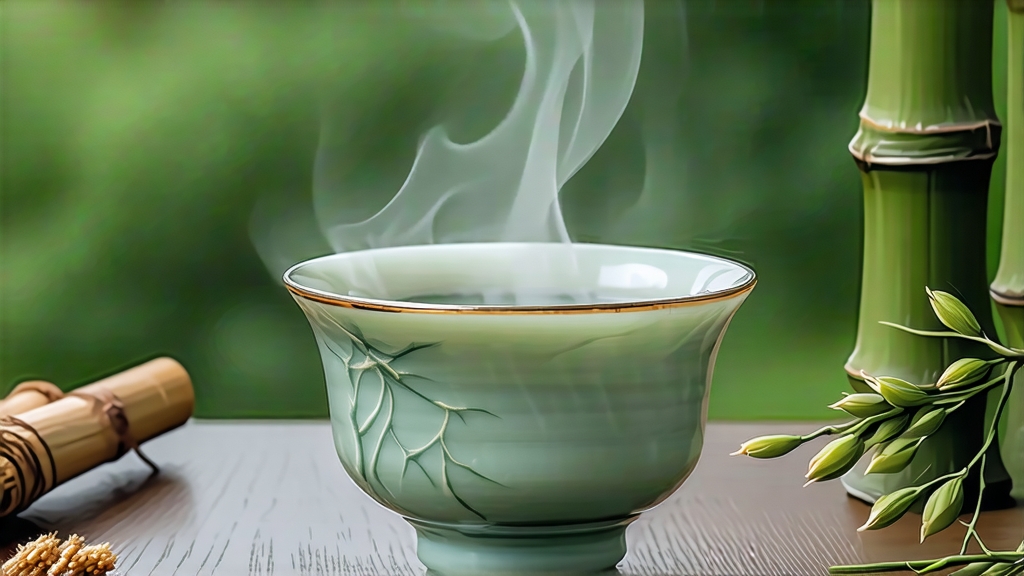
Tucked high on the northern rim of the Sichuan Basin, where the Himalayas shoulder the Yangtze, lies Meng Ding Mountain, a ridge so often wrapped in cloud that local poets call it “the island above the sea of fog.” Here, at elevations between 800 and 1 400 m, an ancient grove of tea trees produces one of China’s most discreet treasures: Meng Ding Huang Ya, literally “Meng Ding Yellow Bud.” Unlike the better-known green teas of neighbouring Emei or the dark bricks of Yunnan, this yellow tea has always lived in the shadowed corridors of imperial tribute, praised in Tang-dynasty edicts yet rarely exported. For international drinkers accustomed to the brisk bite of sencha or the malt of Assam, Meng Ding Huang Ya offers a gentle paradox—green tea’s freshness married to a mellow, almost custard-like sweetness that lingers like late-afternoon light.
History: from tribute to near oblivion
The first written record appears in 808 CE, when the Tang court mandated that Meng Ding’s “first buds after Grain Rain” be rushed to Chang’an by post-horse. Song-era tea officer Zhao Ru-liang noted that the bud must be “the size of a sparrow’s tongue, the colour of ivory,” and that failure to deliver before the Dragon-Boat Festival was punishable by flogging. By the Ming, the tea had acquired its yellowing step—probably by accident when a delayed batch warmed in its bamboo wrapping, turning leaf edges ochre and flavour rounder. Qing emperors reserved it for spring ancestral rites; when the last imperial caravan dissolved in 1911, knowledge of the craft survived only among a handful of Buddhist monks and one clan of basket-weavers in Shangli town. During the 1980s a retired agronomist, Ms. Zhang Zhi-ying, spent six years persuading the monks to teach her the sealed-yellowing mantra; by 1989 state-certified saplings were re-grafted onto 400-year-old trunks, and Meng Ding Huang Ya re-entered the market—still in tiny lots, still picked only five mornings each April.
Micro-terroir: why the mountain makes yellow
Meng Ding benefits from what Chinese geographers label “three coverings”: perennial cloud, red-yellow lateritic soil rich in kaolin, and a 30 % shade canopy of ginkgo, magnolia and bamboo. The diffused light forces the tea bush to synthesise more theanine and less catechin, giving the leaf its signature amino-sweet core. Night temperatures drop 10 °C below day, locking in volatile floral esters—linalool and geraniol—that survive the slow yellowing process. Finally, mountain mist supplies a constant film of moisture, so even sun-withering is gentle; the leaf never panics, never reddens.
Pluck: one bud, no leaf, before 7 a.m.
On the first Tuesday after April 20, pickers climb the 1 450-step stone path carrying bamboo tubes lined with wet parchment. Only the terminal bud—still unopened, no fish-leaf—is snapped with a downward flick that leaves the stem square, not torn. A seasoned picker gathers just 200 g in three hours; 35 000 buds are needed for 500 g finished tea. The harvest halts at 9 a.m. when sunlight angle reaches 45 °; beyond that, the bud’s moisture drops below 72 %, jeopardising the subsequent yellowing.
Craft: the five “stills” of yellow transformation
- Sha Qing – “kill-green” at 140 °C for 90 s on a slightly tilted iron pan. The goal is not full de-enzyming as in green tea; polyphenol oxidase must retain 15 % activity for later colour change.
- Men Huang – the pivotal sealed yellowing. The warm leaf is piled 8 cm deep inside a bamboo box lined with wet kraft paper, then slid into a pine-wood cupboard kept at 28 °C and 75 % RH for 50–60 hours. Every 8 hours the pile is gently turned without breaking the bud; oxidation proceeds anaerobically, turning chlorophyll into pheophytin and releasing a popcorn-like aroma.
- Di Hong – low-temperature pan-drying at 80 °C for 20 minutes to arrest microbial activity.
- Fu Huang –